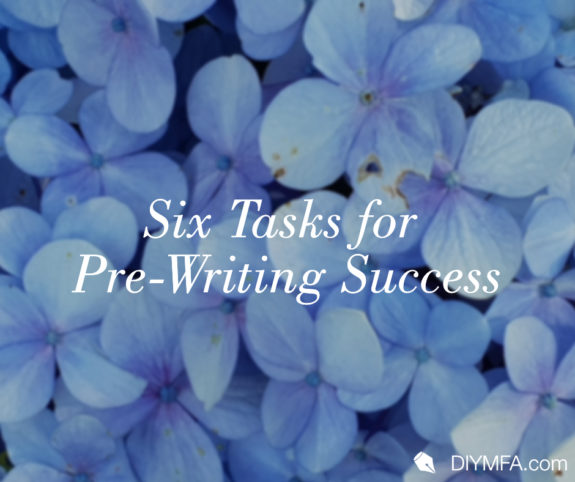Today, I broke the chains that bound me to a writing life of laissez-faire and made a decision. My panster days had served me well, but just as easily could have tanked every romance novel I wrote. In the olden days, well, yesterday, I would open my laptop and re-read the last two or three paragraphs written from the day before and continue without so much as an inkling of a plan. My characters loved me for it since every day was like a fly-by-the-seat-of-their-pants senior skip day. When I reined the story back, at a point near the happily ever after ending, the editing took twice as long as the spinning of the tale.
One thing I knew for sure? I could never be a plotter or an outliner. But a pre-writer? I knew my writing lacked structure, so I gave pre-writing a whirl and believe I found my happy place. Now, don’t assume this means I became an outliner. No how, no way. Let me share the workings behind the curtain and you may become a pre-writing convert, too.
A Pre-Writer Must Accomplish Six Tasks
Pre-Writer Task #1: Write A Premise Sentence
Start by ensuring you have a complete premise so you don’t end up with giant holes near the end of your romance novel. Ask yourself right off the kicker:
- Who is the protagonist?
- What situation does the protagonist find him or herself in when the story begins?
- What is her objective?
- Who is the opponent?
- What will be the disaster that takes the character out of the norm and forces her into the unknown?
- What is the conflict?
Now, use your creativity to make a premise sentence from the above answers. Let’s say we use the epic, action-packed romance, James Cameron’s Titanic.
Beautiful, young socialite, (situation) Rose DeWitt Bukater (protagonist) travels with her fiance and family on the maiden voyage of the great ship, Titanic, to begin a new life in which she is highly unimpressed. She meets and falls in love with the extraordinarily ordinary Jack Dawson and gains a new objective. When the ship rams an iceberg and sinks (disaster) Rose must save Jack who stands chained to a pole in the boiler room (conflict) before her fiance (opponent) shoots them or they drown in the freezing water (opponent).
Pre-Writing Task #2: Identify & Fill Plot Holes
Remember the game Twenty Questions? Grab a piece of paper and jot twenty major plot points about your story,
- One at a time, ask yourself any questions that pop in your head about the plot points. Is every scene relevant to the story? Does a particular scene stagnate the flow, or do all scenes move the story forward? Does each scene provide vital information or are there scenes in need of a whack job? As you peruse your list of plot points and stumble, you’ve found a hole in your story and need to spend time filling it – or cut the scene.
- When you finish the above mission, write twenty more things you know about your story and go through the process again. This time, ask yourself two questions about every notation you made.
- For every plot point, ask yourself: What if? And, go through scenarios of what if “X” happened?
- Because of “X,” happening, Y & Z happen. Fill in “X” with new scenarios to promote ideas and to flesh out holes in need of filling.
Pre-Writing Task #3: Know Your Character
- Backstory: you will not know how your character will act and react unless you know them inside and out. Build a solid backstory and you will never have to wonder how the character will handle any situation. Backstory makes a character real and gives them motive behind their decisions.
- Interview: Interview potential characters for a part in your book. Be thorough and cover all the bases. Make certain your character has the traits and tools needed to jump off of the page.
- Arc: Your main character(s) must begin at Point A of their story and show real growth and change by Point B, happily ever after..
Pre-Writing Task #4: Create a Settings Folder
The setting for your romance novel is a powerful choice. Setting dictates the climate, clothing, sights, sounds, smells, habitat, vegetation, etc. Identify and research settings as you would a character in your book. Make a list of potential settings, collect photos and sketches, bookmark websites and make an informed decision.
Pre-Writing Task #5: Choose a Plot Template
My Three Favorite Go-To Templates.
Take Off Your Pants Outline Your Books for Faster, Better Writing by Libbie Hawker.
Romance Seven Beats: a romance plot structure by Billy Mernit.
Romancing the Beat: a Beat Sheet for romance novels by Jami Gold.
Pre-Writing Task #6: Focus on Proper Scene Structure
Focus on the cycle of Scene/Sequel that repeats through the book.
Scene (Action):
- Goal: Rose searches for Jack
- Conflict: Jack stands chained to a pole, water rising.
- Outcome (Disaster): The ship takes on water and Rose’s ex-fiance fires gunshots.
Sequel (Reaction):
- Reaction: Jack helps Rose climb to a higher level of the sinking ship.
- Dilemma: They are still in danger since the ship is sinking and the water is freezing cold.
- Decision: Jack gives driftwood to Rose so she may live.
I’m giving pre-writing a shot. I love so many aspects of writing and a favorite is opening my mind to an assortment of creative venues. Writers Write!!!

Tammy Lough is an award-winning author who loves writing romance and creating unique characters who burst with personality and frequent sprinklings of humor. She is a member of Romance Writers of America, Missouri Romance Writers of America, Saturday Writers, and Missouri Writers Guild where she serves as liaison. You can connect with Tammy on her website www.TammyLough.com.







